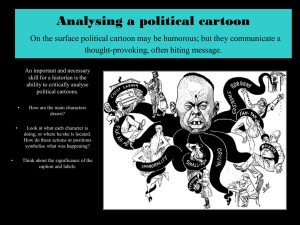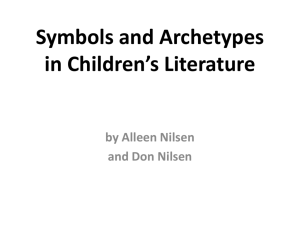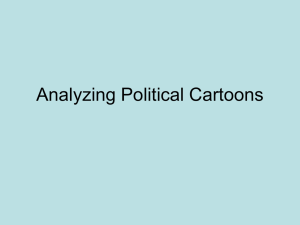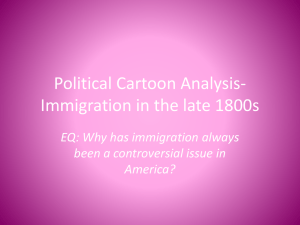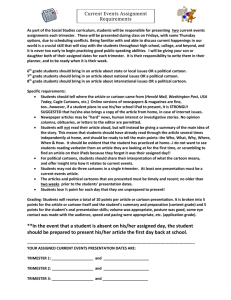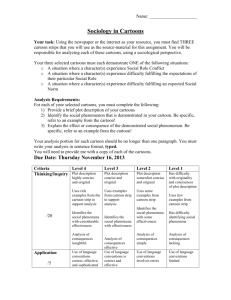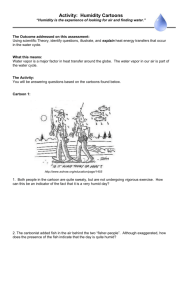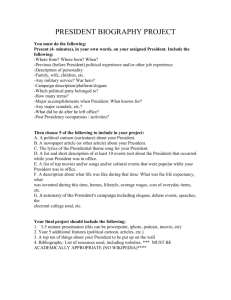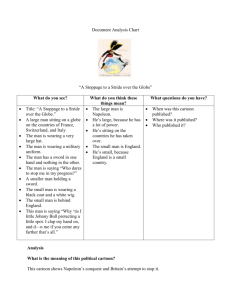What are political cartoons?
advertisement
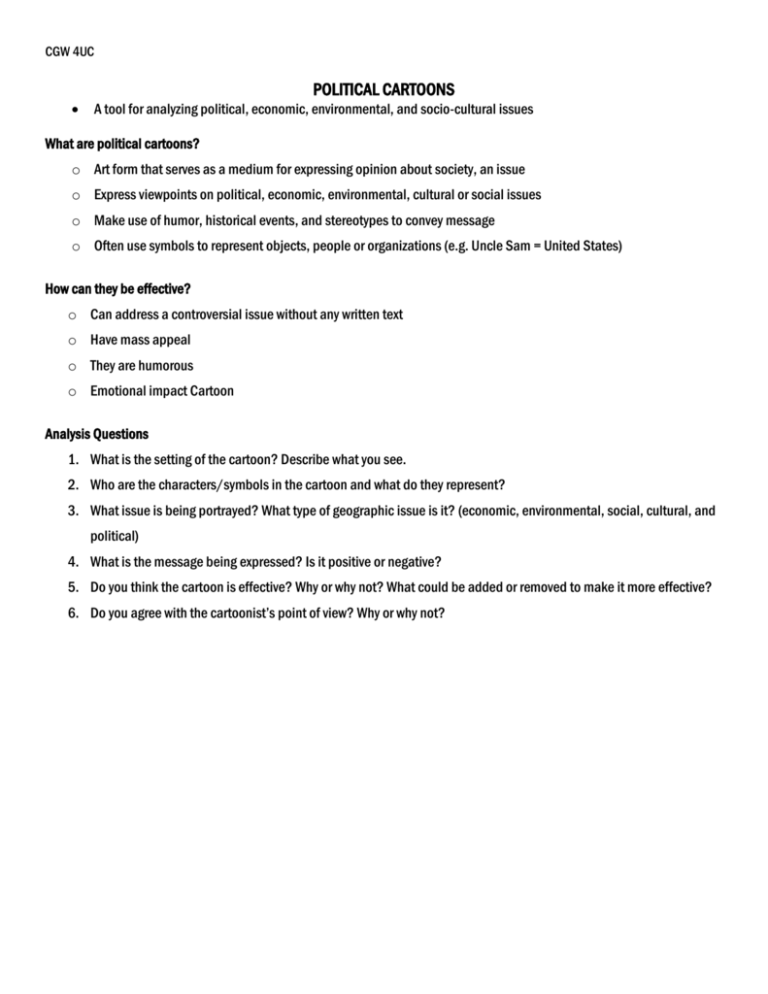
CGW 4UC POLITICAL CARTOONS A tool for analyzing political, economic, environmental, and socio-cultural issues What are political cartoons? o Art form that serves as a medium for expressing opinion about society, an issue o Express viewpoints on political, economic, environmental, cultural or social issues o Make use of humor, historical events, and stereotypes to convey message o Often use symbols to represent objects, people or organizations (e.g. Uncle Sam = United States) How can they be effective? o Can address a controversial issue without any written text o Have mass appeal o They are humorous o Emotional impact Cartoon Analysis Questions 1. What is the setting of the cartoon? Describe what you see. 2. Who are the characters/symbols in the cartoon and what do they represent? 3. What issue is being portrayed? What type of geographic issue is it? (economic, environmental, social, cultural, and political) 4. What is the message being expressed? Is it positive or negative? 5. Do you think the cartoon is effective? Why or why not? What could be added or removed to make it more effective? 6. Do you agree with the cartoonist’s point of view? Why or why not? The North American Free Trade Agreement, known as NAFTA, is a trade agreement among Canada, the United States, and Mexico. NAFTA went into effect on January 1, 1994. NAFTA is also used to refer to the tripartite trading bloc of North American countries. NAFTA called for immediately eliminating duties on half of all U.S. goods shipped to Mexico and Canada, and gradually phasing out other tariffs over a period of about 14 years. Provisions regarding worker and environmental protection were added later as a result of supplemental agreements signed in 1993. Analysis Questions 1. What is the setting of the cartoon? Describe what you see. 2. Who are the characters/symbols in the cartoon and what do they represent? 3. What issue is being portrayed? What type of geographic issue is it? (economic, environmental, social, cultural, and political) 4. What is the message being expressed? Is it positive or negative? 5. Do you think the cartoon is effective? Why or why not? What could be added or removed to make it more effective? 6. Do you agree with the cartoonist’s point of view? Why or why not?

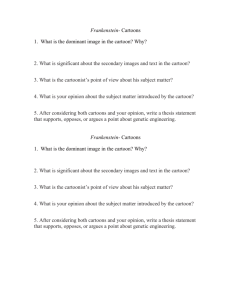
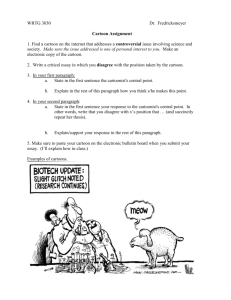



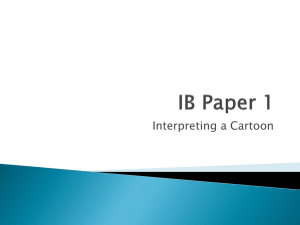
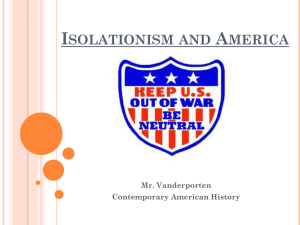
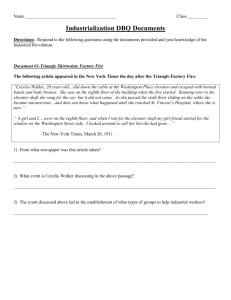
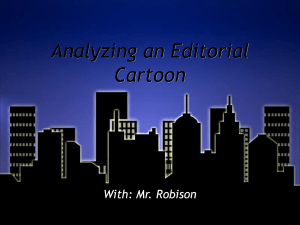
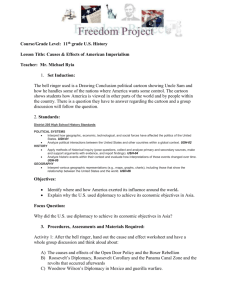
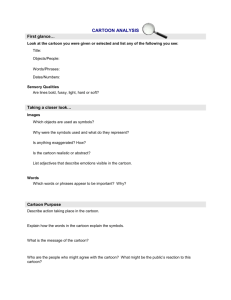
![Phrasal Verbs in Cartoons[2]](http://s2.studylib.net/store/data/005310718_1-897d1a57ddfabbe64c60ba43d0222e3b-300x300.png)
